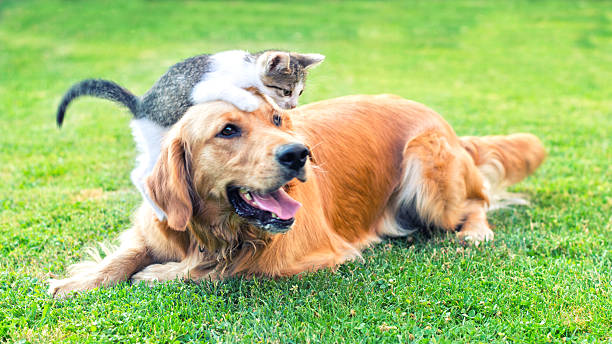It can be a joy to decide to welcome a furry friend or fluffy pet into your home. You can find endless joy and love in the sound of tiny pads and paws bouncing around your home.
We look at the steps you can take to make sure your new addition is settled in their new home.
There are some things you should consider before you bring your puppy home. First, you need to decide where your puppy will sleep throughout the day and at night. This is vital as your puppy will require a quiet place to sleep.
Sleeping is a favorite pastime for puppies. This not only helps with their growth but also improves their temperament. In the beginning, it is a good idea to have a quiet area that is either penned or in a crate.
This will help prevent separation anxiety issues from happening. It will also give your dog access to a safe zone where they won’t be disturbed if they need a break. It is important to understand your dog’s anxiety disorders if they are already suffering from it. Click here for more information.
This is a great place to keep your dog company when you are not able to supervise them. This area can be used to help with toilet training as well as any problems such chewing on inappropriate items.
Another tip is to make a list of the rules you expect for your puppy when he/she grows up. It may sound wonderful to snuggle a puppy in your bed or on your couch, but it could be difficult if your dog is going to grow up into a 45kg dog. A good set of rules can prevent behavioral problems later on.
-
It is also a good idea be prepared.
-
Water bowls and food that are suitable for all ages
-
A wide range of chew toys available
-
Toys to snuggle
-
Collar and lead
-
Dog bed that is appropriate in size
-
Puppy food that is breed-specific
-
Pen or crate for your dog
It’s a good idea for you to take some time to calmly settle your puppy before you bring it home. Remember that your puppy has likely just moved in with its mother and littermates. It is a huge transition for puppies and it’s common for them to feel a bit blue the first week.
You might find them reluctant to play, and they just want to sleep and snuggle. Don’t worry! They will soon be a happy, playful puppy after they feel settled and secure. Some puppies will be fine from the beginning, while others might need to adjust over time. All that is needed is patience and love.
Routine and rules are the best way to settle your puppy. It is a good place to begin: feeding your puppy at the same time every day in the same area. It is a great way to communicate with your puppy and should be started as soon as you bring your puppy home. Your puppy will feel safe if you teach him basic commands, such as sitting down before eating. Your puppy will thrive if you are a patient, kind, and good leader.
Positive reinforcement and positive attitude are key to successful dog training. It’s about teaching your puppy how to communicate in the same language. Your puppy’s safety is also guaranteed by training. It is important to teach your puppy and full grown dog a strong recall command, especially in traffic situations or when a gate is accidentally left open.
Kittens
It’s a smart idea to create a special space for your kitten when you bring it home. This can be done in a bedroom, or even a bathroom. This area can be equipped with a cat scratcher and hidey-hole. A bed, toys, food, water and a litter box are all available. Keep the litter tray out of reach from food and water bowls. This will help prevent your kitten getting sick.
Cats that are new to the home can feel very anxious upon their arrival. It can take some time for cats to become comfortable and confident. Ask to be given a blanket by the breeder, or one that was with your littermates. They will feel more secure once they have settled in their new environment.
This space will be required for your kitten to remain in until they are ready to move on. To avoid them becoming anxious and skittish, all kittens should be able to move at their own pace. You can let them explore and map the house as they become more curious. It’s normal for them to run back into their safe zone when they feel afraid.
Top tip: If you use a hooded litter box, make sure you close the door until your kitten grows. It is difficult for kittens to push the door open and can cause toileting problems that are very costly to fix. It is also a good idea to keep your cat indoors until they reach 16 weeks.
Many breeders recommend keeping your kitten indoors for 6 months. Indoor cats live longer, healthier lives than their outdoor-living counterparts. You can allow your cat to have the outdoors without the dangers.
To conclude
Although it can take some time to bring a puppy or kitten into your home, you can do it with patience and planning. Spend more time with your kitten or puppy and they will be much happier than you think.


